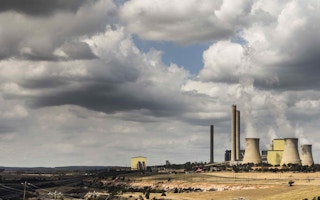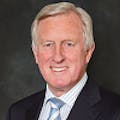On a recent 14.5-hour flight from Los Angeles to Sydney, I had time to read the columnist Charles Krauthammer’s collection of essays, Things that Matter. It made for a disturbing flight.
I have enjoyed Krauthammer’s writing over the years, but there was something in his book that I found deeply troubling: his description of himself as an “agnostic” on climate change. He “believes instinctively that it can’t be very good to pump lots of carbon dioxide into the atmosphere,” and yet he “is equally convinced that those who presume to know exactly where that leads are talking through their hats.”
The word that I found most galling was “agnostic” – not only because Krauthammer is a trained scientist, but also because the word was used repeatedly by former Australian Prime Minister John Howard when he addressed a group of climate-change deniers in London in late 2103. “Part of the problem with this debate,” Howard told the assembled skeptics, “is that to some of the zealots involved their cause has become a substitute religion.”
As Howard and Krauthammer should know, the subject of climate change is not a matter of religion, but of science. According to a 2013 survey of peer-reviewed publications on the subject, some 97 per cent of scientists endorse the position that humans are causing global warming. Anyone familiar with the scientific process is aware that researchers are trained to disagree, to contest one another’s hypotheses and conclusions. A consensus of such magnitude is as close as we ever get to a recognized scientific fact.
Given that even Krauthammer concedes that pumping the atmosphere full of carbon dioxide “can’t be very good,” the next logical step in the debate is to determine the best way to address the problem. As an economist, I favor an auction-based cap-and-trade system to put a price on carbon. But I also understand the potential usefulness of regulatory measures like targets for renewable energy, bans on incandescent light bulbs, and mandates for the use of biofuels. What I cannot accept is for somebody who offers no solutions to claim that those of us who do are “talking through our hats.”
“
What I cannot accept is for somebody who offers no solutions to claim that those of us who do are “talking through our hats.”
Fortunately, voices like Krauthammer’s are becoming increasingly rare. To be sure, there are still holdouts, like Australian Prime Minister Tony Abbott, who replaced a carbon tax with a plan to tax the country’s citizens in order to pay polluters to cut emissions. As a policy, this is inequitable, inefficient, and unlikely to lower emissions at a pace that is sufficient to meet the conditions of the global climate-change agreement expected to be reached in Paris in December.
A sure sign of a shift in mentality is the growing recognition by financial institutions that loans and investments may be overexposed to the risks of climate change. These risks include natural disasters, more extreme weather, efforts by governments to reduce greenhouse-gas emissions, and the knock-on effect of a technological revolution in renewables, energy efficiency, and alternative technologies.
According to the Asset Owners Disclosure Project, which I chair, the top 500 global asset owners are alarmingly exposed to the dangers of climate change. More than half of their investments are in industries exposed to the dangers of climate change; less than 2 per cent are in low-carbon intensive industries. As a result, there is a risk that their investments and holdings will become “stranded,” as changes in policy or market conditions cut the value of infrastructure, other property, and fossil-fuel reserves. As Hank Paulson, Secretary of the US Treasury when the global financial crisis erupted in 2008, once warned, the risks of a climate-induced financial crisis would dwarf those of the sub-prime crisis.
The price of coal, for example, has plunged to around half of its peak level, with plenty of room remaining on the downside. Consequently, shares in coal companies have fallen by as much as 90 per cent, leaving asset owners scrambling to divest. By contrast, investing in a company like Tesla Motors – which has now developed a rechargeable battery for home use, which could lead to a sharp increase in the number of households switching to solar power – looks far more attractive.
As this realization percolates through the market, asset owners are hedging their bets by increasing their investments in low-carbon industries and companies like Tesla. Over time, this will have a significant effect on the allocation of global investment funds. Krauthammer may think that I am talking through my hat, but I am confident that soon enough he – and those who listen to him – will be eating theirs.
John Hewson, a former leader of Australia’s Liberal Party, is Chair of the Asset Owners Disclosure Project.
Copyright: Project Syndicate, 2015.
www.project-syndicate.org











